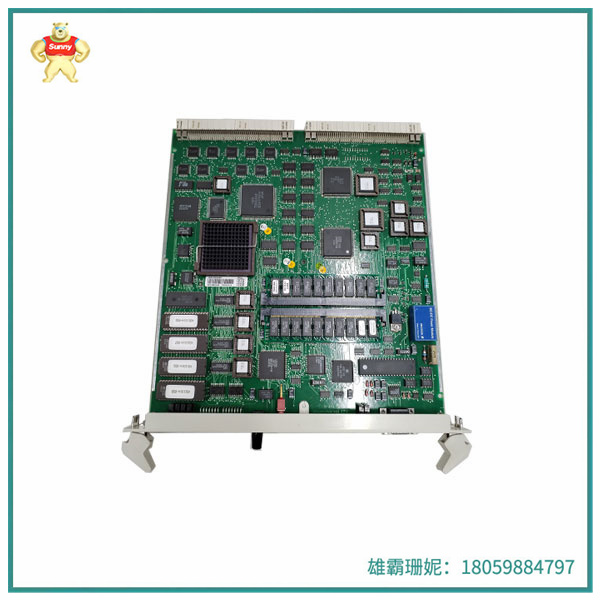
型号:PM510V08 3BSE00B373R1
目录说明:PM510V08处理器模块
货期:现货
发货方式:顺丰/德邦
质保:一年
产品净重:0.87 千克
交换编号
EXC3BSE008373R1包括: 内存模块 Simm
2 PCE 3BSC120004R2
参见 涂层船用分类单元
PM510MV08 处理器模块
处理器模块,通常指的是中央处理器(CPU,Central Processing Unit)的各个组成部分。PM510V08 3BSE00B373R1 CPU作为计算机的核心部件,负责执行指令和处理数据。其整体结构可以分为多个模块,这些模块共同协作,以实现计算机的数据处理功能。以下是关于处理器模块的主要内容和相关数字信息的归纳:
控制单元(Control Unit):
功能:PM510V08 3BSE00B373R1 控制单元是整个CPU的指挥控制中心,负责协调整个计算机的有序工作。
组成:包括指令寄存器(IR)、指令译码器(ID)和操作控制器(OC)等。
作用:根据用户预先编好的程序,依次从存储器中取出各条指令,通过指令译码确定操作,并向相应的部件发出微操作控制信号。
运算单元(Arithmetic Logic Unit, ALU):
功能:执行各种算术运算(如加减乘除)和逻辑运算(如移位、逻辑测试或比较)。
组成:包括加法器、减法器、乘法器、除法器、逻辑门等。
作用:接收来自寄存器的操作数,进行相应的计算,并将结果输出到寄存器中。
存储单元(Storage Unit):
功能:暂时存放数据,包括等待处理的数据或已经处理过的数据。
组成:包括CPU片内缓存和寄存器组。
特点:CPU访问寄存器的时间比访问内存短,这提高了CPU的工作速度。但寄存器组的容量受芯片面积和集成度限制。
其他模块:
时钟和控制信号发生器:时钟负责控制CPU内部各个模块的工作时序,保证指令的顺序执行;控制信号发生器负责产生各种控制信号,控制CPU内部各个模块的工作状态。
寄存器:是CPU内部的高速存储器,用于暂时存放指令和数据。不同寄存器有不同的功能,如程序计数器(PC)用于存放下一条要执行的指令的地址,累加器用于存放算术运算的操作数和结果。
存储器:是CPU和外部设备之间的桥梁,用于存储指令和数据。存储器分为内存和外存,内存是CPU内部的主要存储器,容量较小但读写速度快。
此外,处理器模块的性能指标还包括核心数、频率、工作电压、制造工艺、CPU缓存等,这些指标共同决定了处理器的性能表现。

Model: PM510V08 3BSE00B373R1
Directory description: PM510V08 processor module
Delivery time: from stock
Delivery method: SF Express/Deppon
Warranty: One year
Net weight: 0.87 kg
Exchange number
EXC3BSE008373R1 Includes: Simm memory module
2 PCE 3BSC120004R2
See also coating Marine classification unit
PM510MV08 Processor module
The processor module usually refers to the various components of the Central Processing Unit (CPU). The PM510V08 3BSE00B373R1 CPU is the core component of the computer, responsible for executing instructions and processing data. Its overall structure can be divided into multiple modules, which work together to realize the data processing function of the computer. The following is a summary of the main content and relevant digital information about the processor module:
Control Unit:
Function: PM510V08 3BSE00B373R1 control unit is the command and control center of the entire CPU, responsible for coordinating the orderly work of the entire computer.
Composition: including instruction register (IR), instruction decoder (ID) and operation controller (OC).
Function: According to the user's pre-programmed program, each instruction is taken out from the memory in turn, the operation is determined by instruction decoding, and the micro-operation control signal is sent to the corresponding component.
Arithmetic Logic Unit (ALU) :
Function: Perform various arithmetic operations (such as addition, subtraction, multiplication, and division) and logical operations (such as shifts, logic tests, or comparisons).
Composition: including adder, subtracter, multiplier, divider, logic gate, etc.
Function: Receive operands from the register, perform corresponding calculations, and output the results to the register.
Storage Unit:
Function: Temporarily store data, including data waiting for processing or data that has been processed.
Composition: Includes CPU on-chip cache and register group.
Features: The CPU access register time is shorter than the access memory, which improves the CPU speed. However, the capacity of the register bank is limited by the chip area and integration degree.
Other modules:
Clock and control signal generator: The clock is responsible for controlling the working timing of each module inside the CPU to ensure the sequential execution of instructions; The control signal generator is responsible for generating various control signals and controlling the working state of each module inside the CPU.
Register: is the high-speed memory inside the CPU, used to temporarily store instructions and data. Different registers have different functions, such as the program counter (PC) used to store the address of the next instruction to be executed, and the accumulator used to store the operands and results of arithmetic operations.
Memory: The bridge between the CPU and external devices is used to store instructions and data. Memory is divided into memory and external memory, memory is the main memory inside the CPU, small capacity but fast read and write speed.
In addition, the performance indicators of the processor module also include the number of cores, frequency, operating voltage, manufacturing process, CPU cache, etc., which jointly determine the performance of the processor.

Copyright © 2022-2024 厦门雄霸电子商务有限公司 版权所有 备案号:闽ICP备14012685号-33